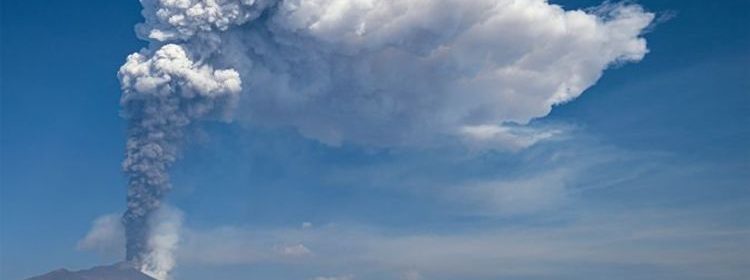Mount Etna eruption: Ash showers down on parks and roads in nearby villages

Mount Etna: Lava pours from volcano in large eruption
When you subscribe we will use the information you provide to send you these newsletters.Sometimes they’ll include recommendations for other related newsletters or services we offer.Our Privacy Notice explains more about how we use your data, and your rights.You can unsubscribe at any time.
INGV, Italy’s national geophysics and volcanology institute, said a 2am (1am GMT) explosion was the 10th since February 16. The volcano’s plume showered eight Sicilian villages with ash, covering parked cars and roads.
No injuries or instances of serious damage have been reported following the latest blast from Etna.
Scientists observing the volcano shared the column of ash and stone surged as high as 10,000 meters (33,000 feet) on Sunday.
INGV added winds swept the ash clouds eastwards, covering homes.
A small and slow flow of lava also travelled down the southeast crater towards an uninhabited side of the mountain.
By mid-morning on Sunday the flurry of activity had slowed somewhat, with the southeastern lava flow coming to man end.
INGV said the volcano continues puffing out a “weak emission of ash” from the crater.
But a few hours later the volcanic tremors picked up again.
The INGV scientists say there is no way of predicting when this current round of particularly robust volcanic activity might subside.
Etna has been active since February 16, with occasional bursts of activity pushing out ash and stone.
Locals have taken to covering their cars with cardboard or other coverings to minimise clean-up after the bursts of activity.
The 700,000-year-old volcano is also the second most active on Earth, after Hawaii’s Mount Kilauea.
Each year, it produces more than tens of million tons of lava and over 7 million tons of carbon dioxide, water and sulphur dioxide.
DON’T MISS…
Mount Etna eruption seen in stunning NASA satellite images [PICTURE]
‘Super volcano eruption’ will hit ‘where we aren’t looking’ – Expert [REPORT]
Meteor news: Watch as fireball bursts through the skies above US [VIDEO]
It follows scientists warning Etna could trigger a tsunami “in the entire Mediterranean” in the future, after previous warnings it was “sliding” towards the sea.
More than 100 GPS station readings taken in 2018 showed the volcano appeared to be slowly and steadily sliding into the Mediterranean Sea.
Lead researcher Dr John Murray added in 2018: “Previous studies of long-extinct volcanoes found those sliding downslope in a similar way have resulted in catastrophic landslides later in their history.
“Constant movement could contribute to a major landslide along Etna’s coast, causing devastating tsunamis to the surrounding areas.”
Source: Read Full Article






